| Weight | 1 lbs |
|---|---|
| Dimensions | 9 × 5 × 2 in |
| host | mouse |
| isotype | IgG2a |
| clonality | monoclonal |
| concentration | concentrate, predilute |
| applications | IHC |
| reactivity | human |
| available size | 0.1 mL, 0.5 mL, 1 mL concentrated, 7 mL prediluted |
mouse anti-CD4 monoclonal antibody (ZM180) 6092
Price range: $160.00 through $528.00
Antibody summary
- Mouse monoclonal to CD4
- Suitable for: Immunohistochemistry (formalin-fixed, paraffin-embedded tissues)
- Reacts with: Human
- Isotype:IgG2a
- Control: Tonsil
- Visualization: Membrane
- 0.1, 0.5, 1.0 mL concentrated, 7 mL prediluted
mouse anti-CD4 monoclonal antibody ZM180 6092
| target relevance |
|---|
| Protein names T-cell surface glycoprotein CD4 (T-cell surface antigen T4/Leu-3) (CD antigen CD4) |
| Gene names CD4,CD4 |
| Mass 51111Da |
| Function FUNCTION: Integral membrane glycoprotein that plays an essential role in the immune response and serves multiple functions in responses against both external and internal offenses. In T-cells, functions primarily as a coreceptor for MHC class II molecule:peptide complex. The antigens presented by class II peptides are derived from extracellular proteins while class I peptides are derived from cytosolic proteins. Interacts simultaneously with the T-cell receptor (TCR) and the MHC class II presented by antigen presenting cells (APCs). In turn, recruits the Src kinase LCK to the vicinity of the TCR-CD3 complex. LCK then initiates different intracellular signaling pathways by phosphorylating various substrates ultimately leading to lymphokine production, motility, adhesion and activation of T-helper cells. In other cells such as macrophages or NK cells, plays a role in differentiation/activation, cytokine expression and cell migration in a TCR/LCK-independent pathway. Participates in the development of T-helper cells in the thymus and triggers the differentiation of monocytes into functional mature macrophages. {ECO:0000269|PubMed:16951326, ECO:0000269|PubMed:24942581, ECO:0000269|PubMed:2823150, ECO:0000269|PubMed:7604010}.; FUNCTION: (Microbial infection) Primary receptor for human immunodeficiency virus-1 (HIV-1) (PubMed:12089508, PubMed:16331979, PubMed:2214026, PubMed:9641677). Down-regulated by HIV-1 Vpu (PubMed:17346169). Acts as a receptor for Human Herpes virus 7/HHV-7 (PubMed:7909607). {ECO:0000269|PubMed:12089508, ECO:0000269|PubMed:16331979, ECO:0000269|PubMed:17346169, ECO:0000269|PubMed:2214026, ECO:0000269|PubMed:7909607, ECO:0000269|PubMed:9641677}. |
| Subellular location SUBCELLULAR LOCATION: Cell membrane {ECO:0000269|PubMed:12089508, ECO:0000269|PubMed:12517957, ECO:0000269|PubMed:2823150, ECO:0000269|PubMed:2990730}; Single-pass type I membrane protein {ECO:0000269|PubMed:12517957, ECO:0000269|PubMed:15340161, ECO:0000269|PubMed:1708753}. Note=Localizes to lipid rafts (PubMed:12517957, PubMed:9168119). Removed from plasma membrane by HIV-1 Nef protein that increases clathrin-dependent endocytosis of this antigen to target it to lysosomal degradation. Cell surface expression is also down-modulated by HIV-1 Envelope polyprotein gp160 that interacts with, and sequesters CD4 in the endoplasmic reticulum. |
| Tissues TISSUE SPECIFICITY: Highly expressed in T-helper cells. The presence of CD4 is a hallmark of T-helper cells which are specialized in the activation and growth of cytotoxic T-cells, regulation of B cells, or activation of phagocytes. CD4 is also present in other immune cells such as macrophages, dendritic cells or NK cells. {ECO:0000269|PubMed:16951326, ECO:0000269|PubMed:24942581, ECO:0000269|PubMed:8088877}. |
| Structure SUBUNIT: Forms disulfide-linked homodimers at the cell surface. Interacts with LCK (PubMed:16888650). Interacts with PTK2/FAK1 (PubMed:18078954). Binds to P4HB/PDI. Interacts with IL16; this interaction induces a CD4-dependent signaling in lymphocytes (PubMed:1673145). Interacts (via Ig-like V-type domain) with MHCII alpha chain (via alpha-2 domain) and beta chain (via beta-2 domain); this interaction increases the affinity of TCR for peptide-MHCII. CD4 oligomerization via Ig-like C2-type 2 and 3 domains appears to be required for stable binding to MHCII and adhesion between T cells and APCs (PubMed:21900604, PubMed:27114505, PubMed:7604010). Interacts with Aedes aegypti long form salivary protein D7L2 (PubMed:36070318). Interacts with Aedes aegypti neutrophil-stimulating factor 1 (PubMed:36070318). Interacts with Aedes aegypti venom allergen-1 (PubMed:36070318). {ECO:0000269|PubMed:11113139, ECO:0000269|PubMed:12089508, ECO:0000269|PubMed:1673145, ECO:0000269|PubMed:16888650, ECO:0000269|PubMed:18078954, ECO:0000269|PubMed:21900604, ECO:0000269|PubMed:27114505, ECO:0000269|PubMed:36070318, ECO:0000269|PubMed:7604010}.; SUBUNIT: (Microbial infection) Interacts with HIV-1 Envelope polyprotein gp160 and protein Vpu (PubMed:16331979, PubMed:2214026, PubMed:7604010, PubMed:9641677). {ECO:0000269|PubMed:16331979, ECO:0000269|PubMed:2214026, ECO:0000269|PubMed:7604010, ECO:0000269|PubMed:9641677}.; SUBUNIT: (Microbial infection) Interacts with Human Herpes virus 7 surface proteins. {ECO:0000269|PubMed:7909607}. |
| Post-translational modification PTM: Palmitoylation and association with LCK contribute to the enrichment of CD4 in lipid rafts. {ECO:0000269|PubMed:1618861}.; PTM: Phosphorylated by PKC; phosphorylation at Ser-433 plays an important role for CD4 internalization. {ECO:0000269|PubMed:2105883, ECO:0000269|PubMed:2512251}. |
| Domain DOMAIN: The Ig-like V-type domain mediates the interaction with MHCII. {ECO:0000269|PubMed:21900604, ECO:0000269|PubMed:7604010}. |
| Involvement in disease DISEASE: Immunodeficiency 79 (IMD79) [MIM:619238]: An autosomal recessive disorder characterized by childhood onset of recurrent and recalcitrant skin warts due to uncontrolled viral infection with human papillomavirus (HPV). Some patients may also have recurrent respiratory infections. Laboratory studies show a complete absence of CD4+ T cells. {ECO:0000269|PubMed:31781092, ECO:0000269|PubMed:33471124}. Note=The disease is caused by variants affecting the gene represented in this entry. |
| Target Relevance information above includes information from UniProt accession: P01730 |
| The UniProt Consortium |
Data
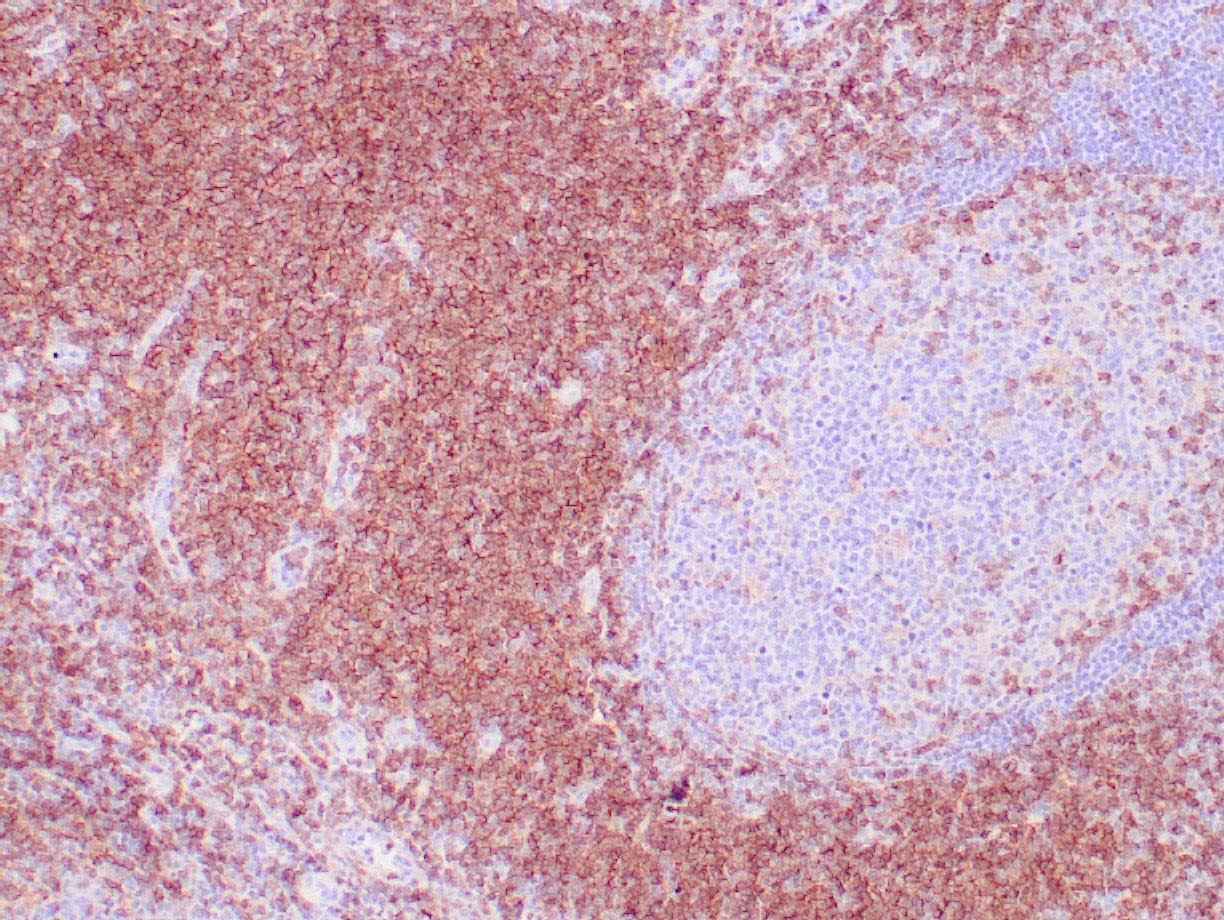 |
| Human tonsil stained with anti-CD4 using peroxidase-conjugate and DAB chromogen. Note cell membrane staining of T cells. |
Publications
| pmid | title | authors | citation |
|---|---|---|---|
| We haven't added any publications to our database yet. | |||
Protocols
| relevant to this product |
|---|
| IHC |
Documents
| # | SDS | Certificate | |
|---|---|---|---|
| Please enter your product and batch number here to retrieve product datasheet, SDS, and QC information. | |||
Only logged in customers who have purchased this product may leave a review.

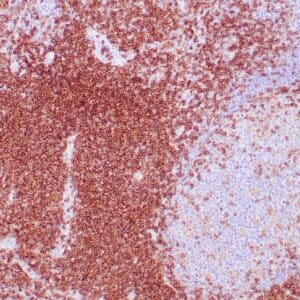

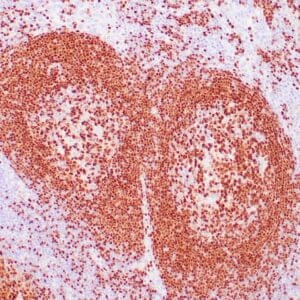
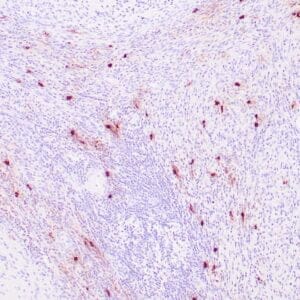
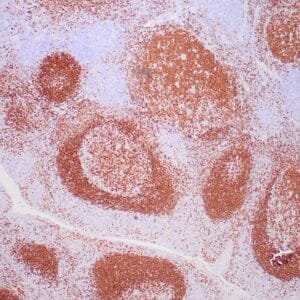


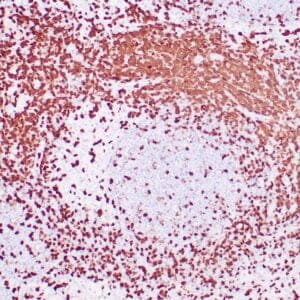

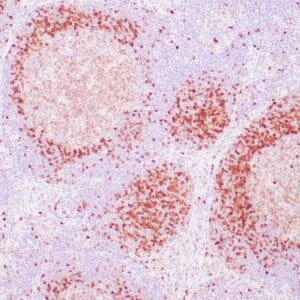

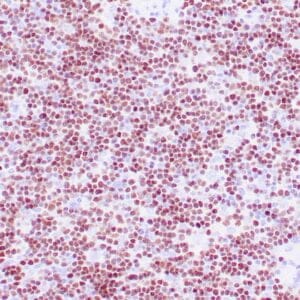
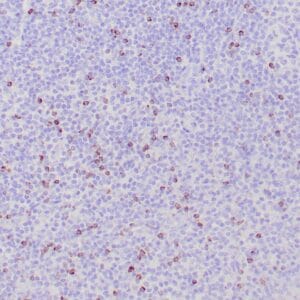
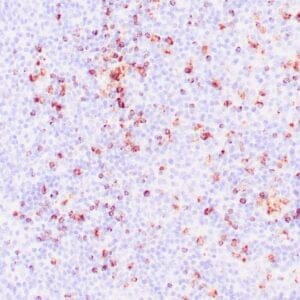
Reviews
There are no reviews yet.